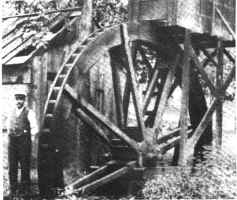|
 Article taken from "Backsights"
Magazine published by Surveyors Historical Society
Article taken from "Backsights"
Magazine published by Surveyors Historical Society
|
GEORGE
N. SAEGMULLER
by Mary M. Root
When George Nicholas Saegmuller came to
America in 1870, he couldn’t have picked a better time. His skills were
greatly needed in an era of southern reconstruction and western expansion. An
adventurous young man of 23, he already had an impressive resumé: German
schooling, fluency in three languages, and an admirable stint working for Thomas
Cook & Son Company in England. He even served as their representative to the
Paris Exposition. Just prior to the Franco-Prussian War, he immigrated to
America.
Saegmuller arrived in Washington, D.C.
and was soon working for William Wurdemann, manufacturer of astronomical and
geodetic instruments. It was probably with Wurdemann’s help that he secured a
position with the U.S. Coast & Geodetic Survey in charge of precision
instruments. He was lucky in his choice of boarding houses. At Mrs. Vandenberg’s
select establishment, he met wonderful people who were to become lifelong
friends: Rudolph Reichmann, Henry Alexander Lockwood, and Maria Jane Vanderberg.
Maria and her sisters were known for their beauty and intelligence, and their
scientific community evidently agreed - Saegmuller married Maria, Lockwood
married her sister Charlotte, and Reichmann married her sister Evaline.
 Evaline and Rudolph moved to New York
(he was a "scientist of Bausch & Lomb Optical Company"). The
Lockwoods and Saegmullers remained in Arlington County, Virginia. Henry and
Charlotte lived at "Easter Spring Farm", one hillside away from the
Vandenberg’s "Reserve Hill" farm, occupied by George and Maria.
Henry and George worked on many projects together. They built and maintained
some of the early roads at their own expense, designed the water-wheel that
pumped water to the Saegmuller home, and installed the first private phone line
in the county between their own residences. They were also business partners
with Camill Fauth, and using his name, "supplied scientific equipment for
observatories and various departments of the government". Evaline and Rudolph moved to New York
(he was a "scientist of Bausch & Lomb Optical Company"). The
Lockwoods and Saegmullers remained in Arlington County, Virginia. Henry and
Charlotte lived at "Easter Spring Farm", one hillside away from the
Vandenberg’s "Reserve Hill" farm, occupied by George and Maria.
Henry and George worked on many projects together. They built and maintained
some of the early roads at their own expense, designed the water-wheel that
pumped water to the Saegmuller home, and installed the first private phone line
in the county between their own residences. They were also business partners
with Camill Fauth, and using his name, "supplied scientific equipment for
observatories and various departments of the government".
The original house on Reserve Hill
burned in 1892. "Mr. Saegmuller decided to rebuild on the same site a house
reminiscent of his native Nürnberg. The new house, completed in 1904, was
constructed of fine bluestone quarried on the estate. Tall white columns at the
front show a Southern influence combined with that of a German castle. The house
has twenty-two rooms plus baths. Just back of the house was built a stone
watertower, which is an exact replica of a gatetower of the Nürnberg Castle
wall. This was copied in minutest detail from a tankard replica of the tower
which Saegmuller brought from Germany." This unique house has survived and
is the Arlington headquarters of the Knights of Columbus.
As if he wasn’t busy enough, Mr.
Saegmuller also served his county as Chairman of the Board of Supervisors, and
"was influential in the choice of the Court House site. He advanced money
to meet county expenses during that period, and personally supervised
construction of the new building." His belief in education led him to
advance money for a new school building. The Saegmuller Public School was in use
from 1890 until 1937 when it was replaced by a larger structure.
Locally he was known as "Mr.
Saegmuller, the inventor". But his neighbors probably had no idea just how
many scientific instruments he created, or assisted in creating, or how many
patents he held. His most famous contribution to the surveying community was the
Saegmuller Solar Attachmentv, but he also constructed the first model of W.M.
Beaman’s Stadia Arc in June 1904. He compiled his own mathematical data and
was often at the naval observatory. Surveyors of that era could send 10 cents to
"G.N. Saegmuller, Washington, D.C." and receive "The Pocket Solar
Ephemeris and Refraction Tables for Use with Saegmuller’s Solar
Attachment". In 1905 he combined with Bausch & Lomb Optical Company and
shortly after that the Carl Zeiss Company of Germany joined them both. Bausch
& Lomb continued to publish Saegmuller’s solar ephemeris, and their 1915
"Metro Manual" states in its preface: "To extend the boundaries
of popular knowledge on this subject, to provide a ready reference in relation
to instruments of our own manufacture and to give our customers the best there
is in value and treatment without their insistence, is the excuse and necessity
for the publication of this, the ninth, enlarged and revised edition of the
Saegmuller Vest Pocket Handbook." Fittingly, the emblem on the manual’s
cover represents a prism, and each third bears the initial(s) of the founding
companies.
Saegmuller also held patents for
military instruments, his best known probably the bore sight, but "with the
assistance of Admiral Sampson during WWI, he invented the modern telescope
sights for the Navy and the range-finder". His scientific and inventive
abilities benefited our military for decades.
George Nicholas Saegmuller, the
inventor, public leader, educator, philanthropist, and family man, died in his
beloved Arlington, Virginia on February 12, 1934.
Quoted material from Arlington Heritage
- Vignettes of a Virginia County, written and published by Eleanor Lee Templeman,
1959.
|
